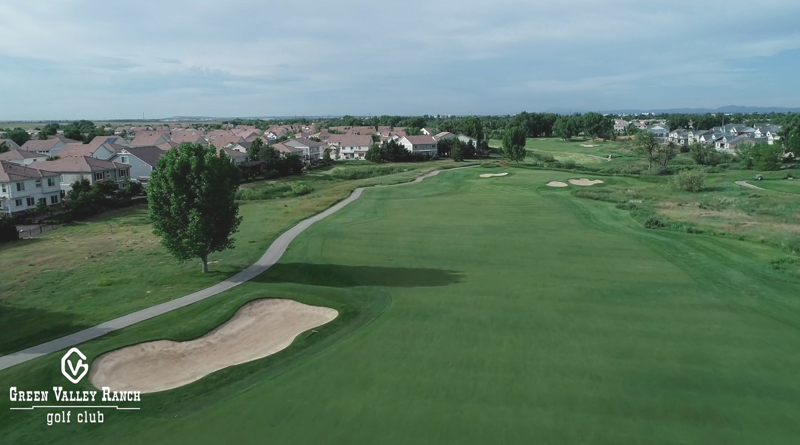Imagine this: you’re on a par-5, having just hit your shot toward the green. You line up, and with a steady hand, you sink it. But here’s the catch—you didn’t just make a hole in one. You just made history. You’ve scored a condor, the rarest achievement in golf. But what does this once-in-a-lifetime shot say about the course you’re playing on and the maintenance that goes into making a condor possible?
In this article, we’ll take a deep dive into what a condor is, why it’s so difficult to achieve, and the role that course maintenance plays in creating the conditions that allow for such an extraordinary shot. Whether you’re a golfer aiming to hit a hole-in-one, or a golf course enthusiast curious about the science behind course maintenance, understanding the rare condor and its relationship to well-maintained courses can add a new layer of appreciation to your game.
What is a Condor in Golf?
A condor, also known as a “double albatross,” is the rarest achievement in golf, far rarer than even a hole-in-one. It refers to the event where a player scores a 4-under-par on a hole, typically on a par-5. While a hole-in-one might seem like a long shot for most, achieving a condor is considered virtually impossible by many golfers. It’s so rare that there are only a few confirmed instances of it in recorded golf history.
The condor usually requires a combination of exceptional skill, favorable conditions, and, perhaps most importantly, the right course design. The distance to the green must be long enough to allow for a second shot that can go the distance, but also short enough to make the possibility of a hole-in-one a theoretical, albeit unlikely, reality.
For example, in 2007, a golfer named Mike Crean achieved a condor on the 517-yard 6th hole at Green Valley Ranch Golf Club in Colorado, USA. This hole-in-one on a par-5 was a combination of an accurate tee shot, a perfect second shot, and a bit of luck with the hole’s design and placement.
Course Design and Conditions That Make a Condor Possible
While achieving a condor may rely on incredible skill and a dash of luck, the golf course itself plays a critical role in making it even possible. Course design, maintenance, and layout directly impact how a golfer can play a hole and what their chances are of hitting a rare shot like a condor.
One of the most important factors is the length of the hole. Par-5s typically range from 450 to 600 yards, but they can vary significantly depending on the course. Shorter par-5 holes, particularly those under 500 yards, may offer a more reasonable shot at a condor. If a golfer is able to land the ball in the fairway with their first drive, and the second shot is well-placed, it might leave a short enough distance to the green that allows for a perfectly executed shot into the hole.
At the same time, favorable weather conditions can increase the likelihood of a condor. A strong tailwind, for example, could help a golfer drive the ball further down the fairway, increasing their chances of reaching the green in two shots.
But it isn’t just the length of the hole or weather that counts—course maintenance plays a vital role in enabling such rare feats. The condition of the fairway, the thickness of the rough, and the positioning of hazards like bunkers all determine how players approach each hole. For example, a course that is well-maintained with smooth fairways and proper irrigation ensures that shots are more predictable. This consistency in course conditions gives golfers the chance to hit rare shots like a condor, even if they don’t achieve it often.
The Role of Golf Course Maintenance in Enabling Rare Shots
The maintenance of a golf course directly impacts the golfer’s ability to play at their best. Well-maintained courses feature well-groomed greens, smooth fairways, and properly placed hazards that keep the game challenging yet fair. When golf course maintenance is carried out properly, it allows players to rely on their skills, rather than the randomness of unpredictable course conditions.
For example, one key aspect of golf course maintenance that has a profound impact on a golfer’s ability to make rare shots is the state of the fairways. A well-maintained fairway with healthy grass allows for better ball contact, making it easier to get the ball to the green in fewer strokes. When a course is poorly maintained, with uneven grass or patches of bare ground, golfers may face unpredictable bounces or errant ball paths. This could hinder the chances of reaching the green in two shots or making that key putt to score a condor.
The placement and maintenance of hazards like bunkers and water features also play a role in determining how golfers approach a hole. A well-positioned bunker can challenge a player’s accuracy, while a poorly maintained one may simply be an eyesore that does little to impact play. Similarly, water hazards must be carefully managed to ensure they don’t disrupt the course’s flow but instead present a true challenge for the golfer. Proper course maintenance ensures that these hazards have the intended effect without making the game unfair or frustrating.
The Importance of Fairway and Green Maintenance
Fairways and greens are the focal points of any golf course, and their condition is critical to creating the right environment for extraordinary shots like a condor. Well-maintained fairways with consistent turf conditions give golfers a stable surface to strike their shots, improving their chances of hitting long drives or reaching greens in fewer strokes.
On the greens themselves, course maintenance plays a vital role in maintaining smooth, consistent putting surfaces. A well-maintained green is free from imperfections, ensuring that putts roll smoothly and with predictable breaks. When the greens are in peak condition, it gives golfers a better chance to sink challenging putts, potentially leading to lower scores and an increased chance of landing a condor.

Course Maintenance in Action: A Day in the Life of a Golf Course Superintendent
Behind every well-maintained golf course is a golf course superintendent and their team, who work tirelessly to ensure that every blade of grass is in top condition. The superintendent is responsible for managing all aspects of course care, including turf management, irrigation systems, pest control, and more. They must balance the aesthetic appeal of the course with the functional needs of the game, all while adhering to sustainability practices.
Course maintenance is a daily task that requires a keen eye for detail and a deep understanding of turf science. Superintendents monitor weather patterns, soil health, and irrigation schedules, adjusting as needed to maintain optimal course conditions. It’s no easy task, especially considering the different types of turf, the needs of specific grass varieties, and the various environmental factors at play.
A golf course superintendent must also stay informed about the latest technology in course maintenance, from GPS-guided mowers to advanced irrigation systems that minimize water usage. All of these tools help ensure that a course remains in excellent condition, providing golfers with the best possible playing conditions—conditions that make rare shots, like a condor, achievable.
Does the Condor Matter to the Average Golfer?
While hitting a condor may be an incredibly rare event, it highlights the importance of well-maintained golf courses in enabling such feats. Whether or not you ever make a condor, the quality of the course you play on has a significant impact on your experience. A course that is well-maintained gives you the opportunity to showcase your skills and challenge yourself with every shot, whether you’re playing for fun or competing.
For golfers who are striving to improve their game, it’s essential to recognize the impact that course maintenance has on their performance. A pristine course not only enhances your enjoyment of the game but also allows for more predictable, fair conditions that let you focus on what matters most—your game.
The Rarity of the Condor and What It Represents
While a condor may remain a rare achievement, it servesgreen as a reminder of the potential that exists when everything aligns perfectly. It’s about the skill of the golfer, the design of the course, and the maintenance that keeps the course in top condition. Every well-maintained golf course gives golfers the chance to make their best shots, pushing them to achieve the extraordinary, even if it’s just a once-in-a-lifetime event like a condor.
Next time you step onto the tee, take a moment to think about the work that goes into maintaining the course, from the fairways to the greens. Every stroke you take is supported by a team of professionals working behind the scenes to ensure that the conditions are just right. Who knows? Maybe your next rare shot won’t be so impossible after all.











